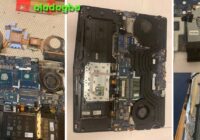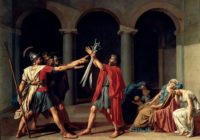TECHNISCHE UNIVERSITÄT BERLIN, GERMANY
Seminar: Future Diagramming (philosophical writing)
TOPIC: Digital Art and its Representation in Today’s Architectural Practice
written by Babatunde Oladogba
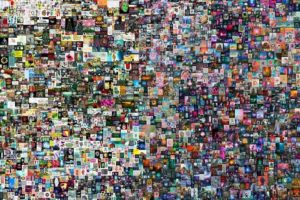
Fig. 1: The verge – Beeple’s collage, Everyday: The First 5000 Days, sold at Christie’s Source: https://www.theverge.com/2021/3/11/22325054/beeple-christies-nft-sale-cost-everydays-69-million
Diagram as a communication tool has always been used for symbolization and representation from the time of the ancient and even today for analyzing architectural and urban problems. Eisenman‘s understanding of graphic notation systems also considered diagrams to be a design strategy themselves as they have proven to be a valid design tool for artists, architects, and urban designers in their design studios and in their everyday practices. By looking into how digitalization has interfered with today’s architectural practice, I asked the critical question, is digital art the future of diagramming and what does digital art represent in today’s architectural practice? My critical question was inspired by the digital art in Fig. 1 above, the everyday Beeple’s digital art created by Michael Joseph Winkelmann, a digital artist popularly known as Beeple. The art was part of his Everyday series for 5000days. Vignesh Sundaresan is a digital entrepreneur popularly known as Metakovan who bought the digital art for 69 million USD at the final Auction on March 11, 2021.
The artist’s intention was to start and finish one digital art every day for 5000 days. He started day 1 on May 1st, 2007 until January 7, 2021, making it a 13 years journey for the realization of the art. The art only exists in NFT and not in a physical state. NFT as a fast-developing space for artistic expression in the world of blockchain and virtual reality also attests to man’s desire for space conquest. This is a space in the virtual world that I consider to be utopia. The aforementioned details are what made the beeple’e art most valuable digital art as its current worth already exceeded 200 million USD. But, if we look beyond the value, the digital art reflects emotion, abstraction, complexity, and interlinked geometries, which were also practiced by early men.
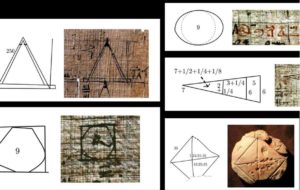
Fig. 2: Diagrams in ancient Egyptian geometry Survey and assessment by Gregg De Young Source: https://www.sciencedirect.com/science/article/pii/S0315086009000081
In order to understand how diagramming of the past influenced digitalization in the 21st century, I studied the article written by (Gregg De Young, 2009) titled “Diagrams in ancient Egyptian geometry Survey and assessment”. The article surveyed and cataloged the geometric diagrams that survive from ancient Egypt. So, Take Egypt for example in this article, Diagramming in ancient Egypt was established through mathematical principles, concepts, and tradition. Diagram figures in ancient Egyptian mathematics were deployed in form of squares, rectangles, triangles, trapezia, circles, etc which is represented in fig. 2 above. The diagrams were produced with sufficient accuracy to enable the reader to conceptualize the problem. I draw a connection from here because I see that contemporary diagrams are often established and controlled with concepts, grids, geometries, and complexities. This mathematical problem from ancient Egyptian goes on to be a great influence in today’s digitalization. The reference diagram in fig. 3. on the other hand is a contemporary museum created by Frank Gehry. it’s an abstract expressionism of Architecture. The obvious practices that are reflected in the design are abstract expression, complexity, and geometry. The aesthetic and philosophy behind the abstract expressionism came about through a dissemination of the entire process of art-making. A clear reflection of the practices here can be connected to that in fig. 1., as advancements in technology have radically shifted the way we define the materiality of diagrams. Traditional techniques such as sketching, photography, and painting, possess their own materiality, the place of the diagram is less easy to locate in the digital age and this was also established by (Jakub,2018) in his article “ art as information. The case of Gilles Deleuze’s concepts of mapping, systematicity, virtuality, and diagram is also the theoretical scaffolding behind the methodological approach to the field of visual digital art (Jakub, 2018).
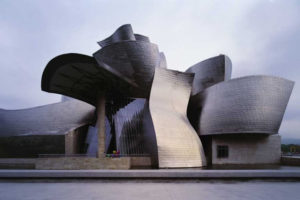
Fig. 3: Frank Gehry’s Guggenheim Bilbao museum, https://www.ideelart.com/magazine/the-influence-of-abstract-art-on-modern-and-contemporary-design-by-phillip-barcio
Bart Lootsma also established in his article reality bytes that a computer is only a machine that reinforces communication between different diagrams, as such, the tools themselves have become a diagram. Here, I draw my conclusion that digital art is however not the future of diagramming but rather a trend of practice in diagramming that follows a process of creation. When I looked at Francis Bacon’s approach in his article – the logic of sensation, his expression of art and painting, follows a process of creation which is also the case in digital practice. This concept also guided my diagrammatic practice presented in fig. 4, which followed a process of creation.
My diagrammatic Practice
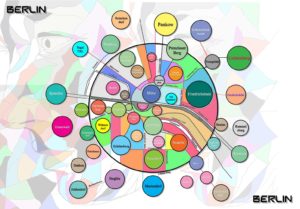
Fig. 4: The network bubble of Berlin – The city through our eyes. Source: Author‘s Diagrammatic practice
My diagrammatic practice was created following the process of creation, titled the network bubble of Berlin – The city through our eyes. The idea was to create a diagram that visualizes the city map of Berlin in a closer and clear view that can easily be understood, controlled by abstraction, size, and shapes definition.
By reflecting on the practice of the past and bridging the connection to today’s practices, I established that the development of science and technology has been the principal engine of the evolution of digital art. Digital art has inherited the concept of creating art by using precise predefined rules, i.e., the rule or instructions which were adopted as the conceptual central element in the creation process (Aderito et al., 2009).
My diagrammatic Process
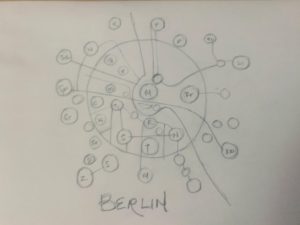
Stage 1: the sketch draft on paper.
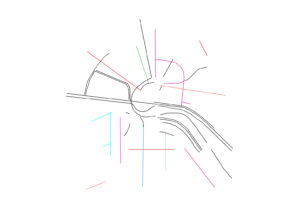
Stage 2: the city network establishment.
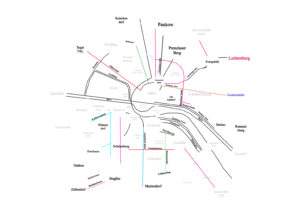
Stage 3: the city networks and address
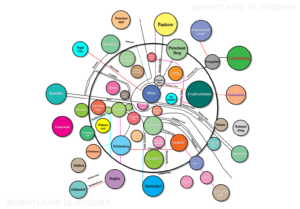
Stage 4: the city bubble definition by size and circular shapes.
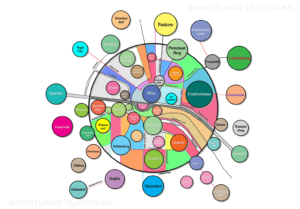
Stage 5: the city bubble definition by abstract color, size, and circular shapes.
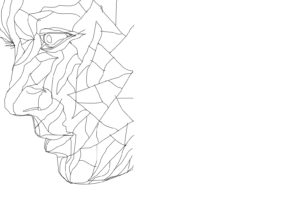
Stage 6: the abstract background of the city navigation through our eyes.
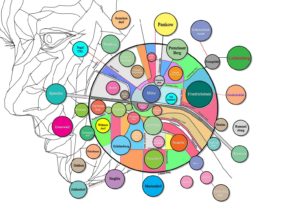
Stage 7: the abstract background of city navigation through our eyes and the network bubble layered together to form an abstract map of the city that can easily be understood.

Stage 8: the final map – The network bubble of Berlin
Sources:
Adérito F. M., Pedro B., Nelson Z., (2009). The Creation Process in Digital Art. Available at https://www.researchgate.net/publication/227244741
Jakub Zdebik, 2018. Diagrams: Art as Information. Available at http://drainmag.com/diagrams-art-as-information/
Gregg De Young, 2009. Diagrams in ancient Egyptian geometry Survey and assessment.
Available at https://www.sciencedirect.com/science/article/pii/S0315086009000081
https://www.ideelart.com/magazine/the-influence-of-abstract-art-on-modern-and-contemporary-design-by-phillip-barcio
https://www.theverge.com/2021/3/11/22325054/beeple-christies-nft-sale-cost-everydays-69-million
https://metapurser.substack.com/p/nfts-the-first-5000-beeples
https://360.here.com/hs-fs/hubfs/Imported_Blog_Media/ArchieBerlin.jpg?width=1536&name=ArchieBerlin.jpg



